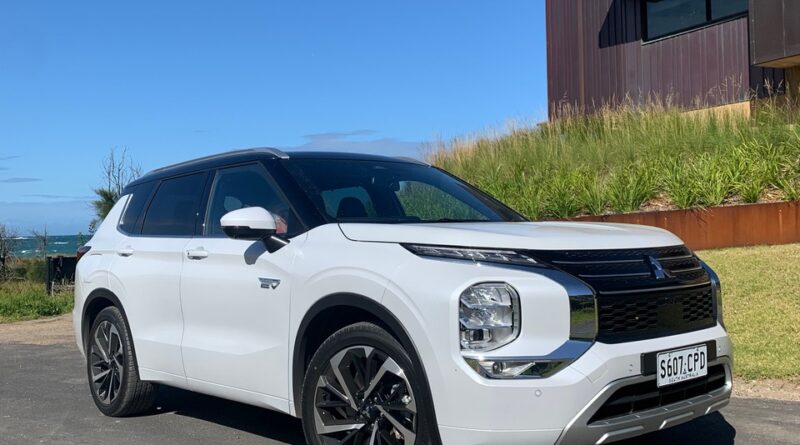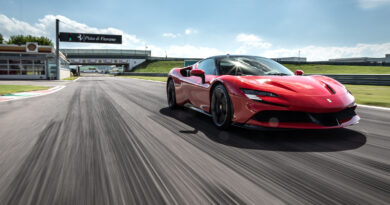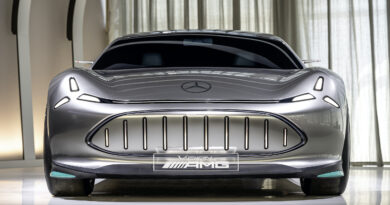2023 Mitsubishi Outlander PHEV long-term review: Laziness destroys our fuel savings, but plug-in potential is clear
In what might be called the normal, or even old world, I would have been very happy to drive a
large, luxurious and family friendly SUV for 24 weeks and walk away at the end of it with a fuel-
economy figure of just 7.0 litres per 100km. Indeed, I’d probably be thrilled, surprised and suspicious
that I’d gotten the math wrong. But in the case of the Mitsubishi Outlander PHEV I just spent six months living with?
That figure is, frankly, embarrassing, and I should be ashamed of myself.
At EV Central, we have spoken to people who’ve driven tens of thousands of kilometres in an
Outlander PHEV and barely visited a fuel station (in fact, one only did so because the petrol in his
tank was getting stale). Others have managed to exactly match the Mitsubishi’s claimed economy
figure of 1.5 litres per 100km, which is bonkers in a vehicle this big.
READ MORE: Mitsubishi Outlander PHEV long term update: Camping is depraved and should be banned
READ MORE: The five best family EVs under $100K: From Tesla and Hyundai to Kia and Mercedes-Benz
READ MORE: Mitsubishi Outlander PHEV – Long-termer welcome
I have no excuses other than the same ones I’d give for not being fit, or skinny, or a CEO by now.
I’m just a bit lazy.
I really liked the idea of driving a PHEV, because I have solar panels and the Outlander has an EV-
only range of 84km and that meant that, as long as I plugged it in to my home charger, during the
day when the sun was out, I’d be able to run it as I have previous full EVs – completely for free and
zero emission.
The fact is I rarely drive more than 30km a day, often less, and that would mean only charging a
few times a week, in fact. Easy.
But here’s the thing – part of my brain knew that, unlike full EVs I often drive, I really didn’t actually
have to charge up the Outlander, ever. Because it also has a 2.4-litre petrol engine, which takes
what we should now call easy old fuel, and the meant that if the batteries did run flat, it didn’t
matter at all (except to the environment, my commuting costs and a lingering sense of shame).
For the first few weeks, maybe two months even, I was hard and fast and firm about the charging
thing, and I got well more than 1000km off my first tank of fuel, because I was in green EV mode
so often, and so strict about plugging in the Outlander to my charger.
But then, well, you know, the outlet was on the wrong side, so that meant reversing into my
driveway, and revising is… well, let’s just say it can take as much as 40 seconds longer than
fronting in.
And sometimes there are other cars in the way, and… did I mention I’m lazy?
The problem with running your PHEV like an EV, then, it seems to me, is temptation/laziness. If
you don’t have to eat well and go for a run every day, will you? And if you don’t have to plug in your
car, because a PHEV set up makes it possible, will you?
I have to say, from research, that the kind of people who buy a Mitsubishi PHEV are not like me.
They are what I might call good people, or better people, and as such they are buying a car like
this to do the right thing, and will continue to do so, and thus continue to achieve EV-like feelings of
green goodness, albeit with the ability to get in their Outlanders and drive from Sydney to Brisbane
without once worrying about finding a charging station or how long it’s going to take. They will do it
properly, and reap the benefits.
The thing is, of course, that such buyers are in short supply. We asked Kia CEO Damien Meredith whether he thought PHEVs were a “dead end” in this country.
“Looking at the figures, it is,” Mr Meredith said, bluntly. “Last month there were 791 PHEVs sold in
Australia versus fully electric sales of 8124, so that probably paints a picture.
“I drive a PHEV myself, and for me it’s perfect, I’m 10km from work, so all I do each morning is
plug it in and charge it up at work, and the great benefit is, I just don’t have to go to a petrol station.
“I didn’t realise what a pain in the butt is it going to a petrol station until I stopped, it just saves so
much time.
“My personal view is that a plug-in hybrid is a hard concept to sell. I just don’t think the consumer
understands it.”
Which is sad and a bit annoying. If someone could just explain PHEVs, a lot more people might
buy them. If I was a typical motorist instead of a spoilt rotten journalist with too many choices, I’d
think about getting one myself. But as another industry insider pointed out, no one company in
Australia is invested heavily enough, or has invested enough, in explaining this tech to Australians,
while Tesla has invested global capital into people taking EVs seriously, and desiring them.
My personal failures aside, I really like the range-topping Exceed Tourer variant of the Outlander I
drove, with its lashings of leather and heated seats and space for everyone. I even liked the way it
drive, which is pretty good for a car of this size.
I must admit it makes weird, whining sounds at highway speeds, but that’s a result of its futuristic
EV-style single-speed transmission, mainly. Around town, in EV mode, it’s a sweetly quiet ride.
I also enjoyed taking it camping, far more than camping itself, thanks to its hugely clever V2L
mode, into which I would happily have plugged an electric blanket, if I’d bought a longer power
cord.
Over my six months, I drove the Outlander just 3836km and achieved an energy efficiency figure of
23.2kWh/100km, and an over all fuel-economy figure of 7.0 litres per 100km, which is not nearly as
good as it could be, but also pretty good.
Overall, then, my six months with the Mitsubishi Outlander PHEV was a success. It was just me
that was a failure.




